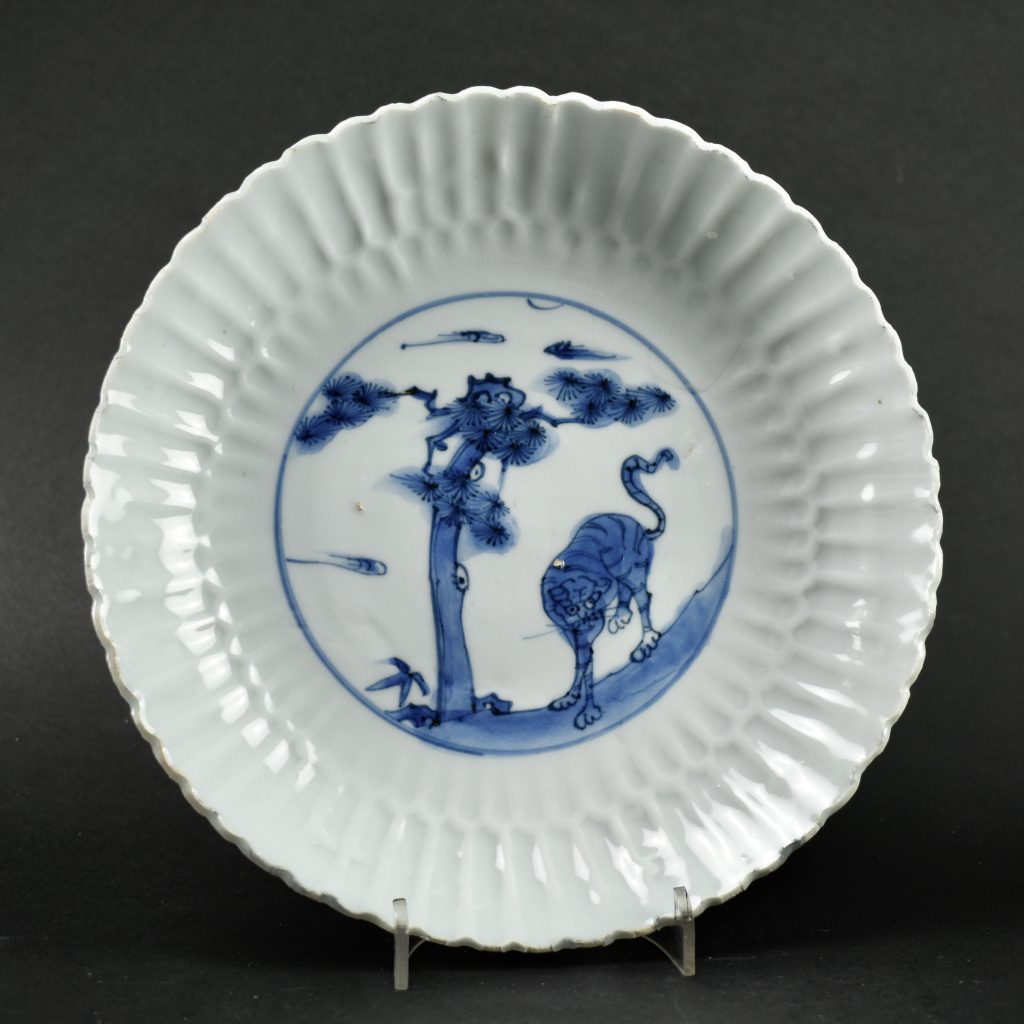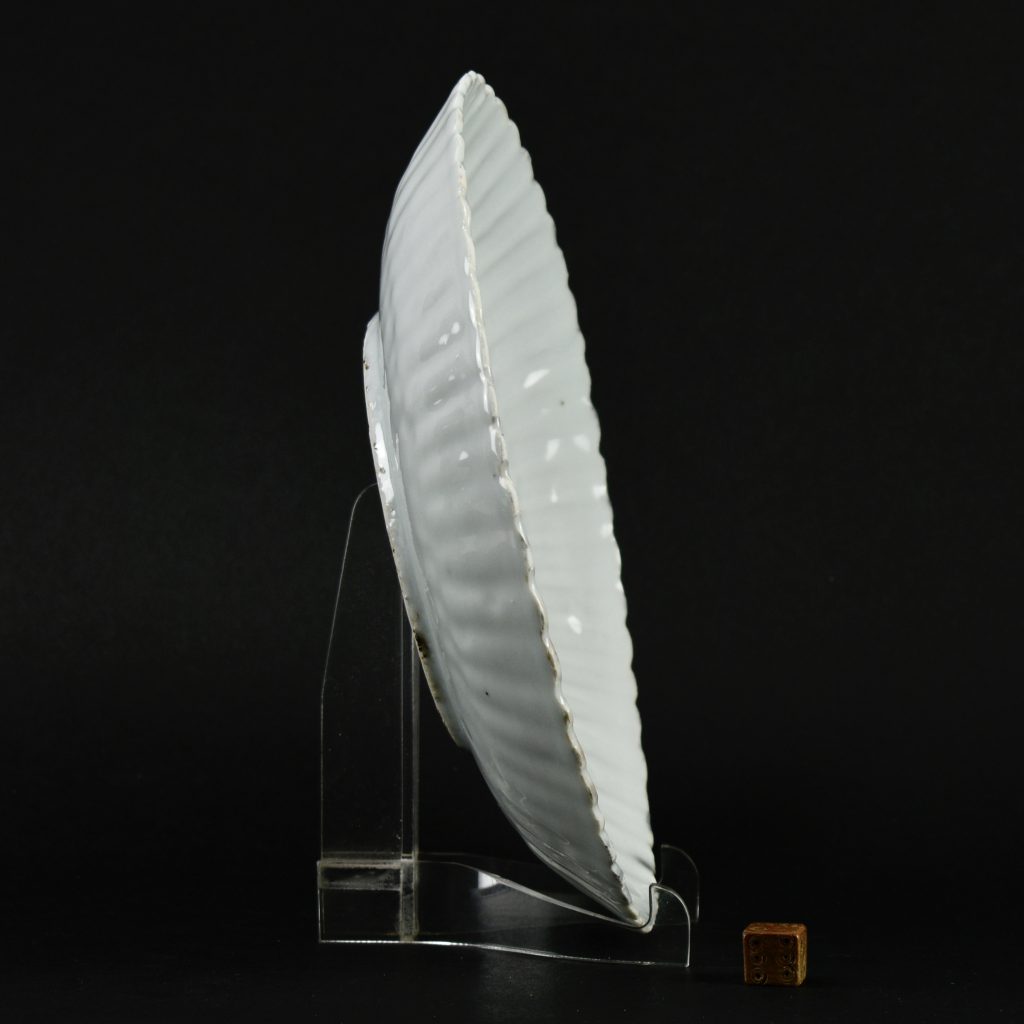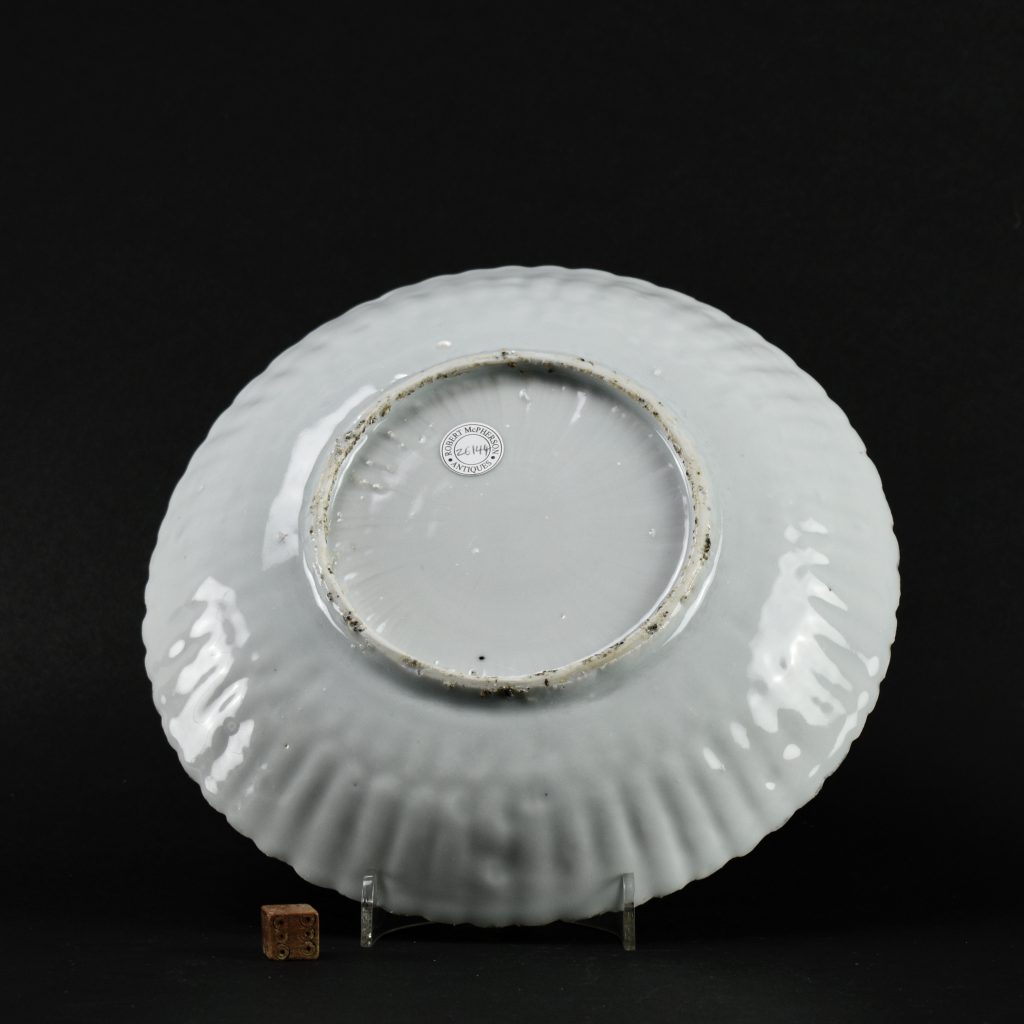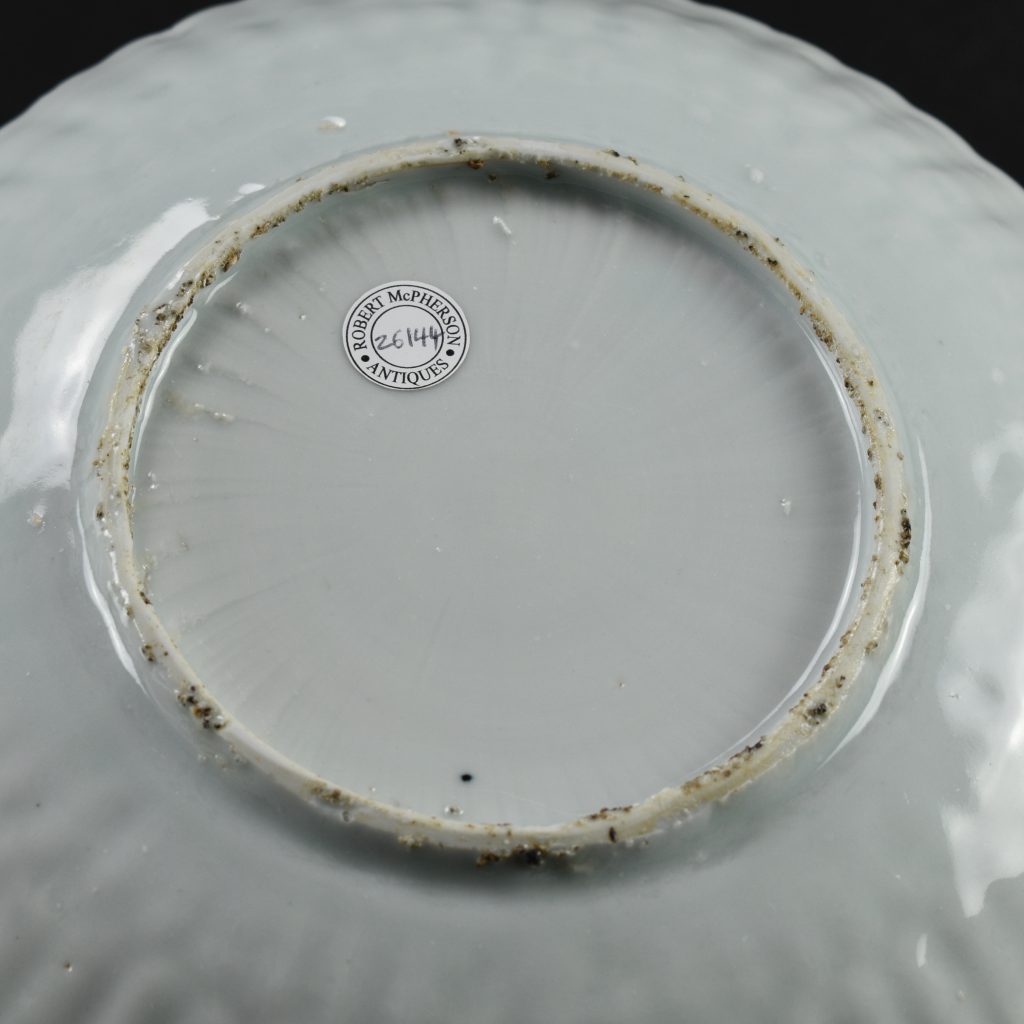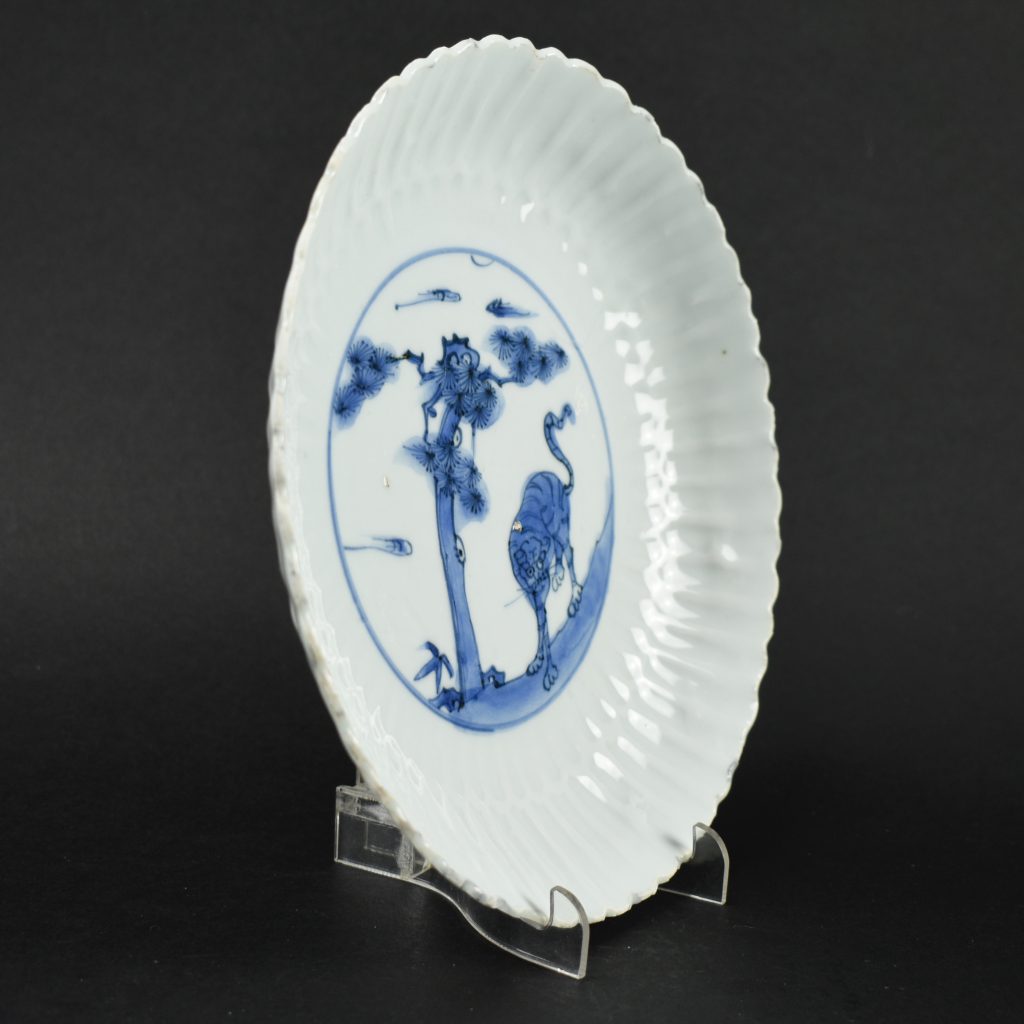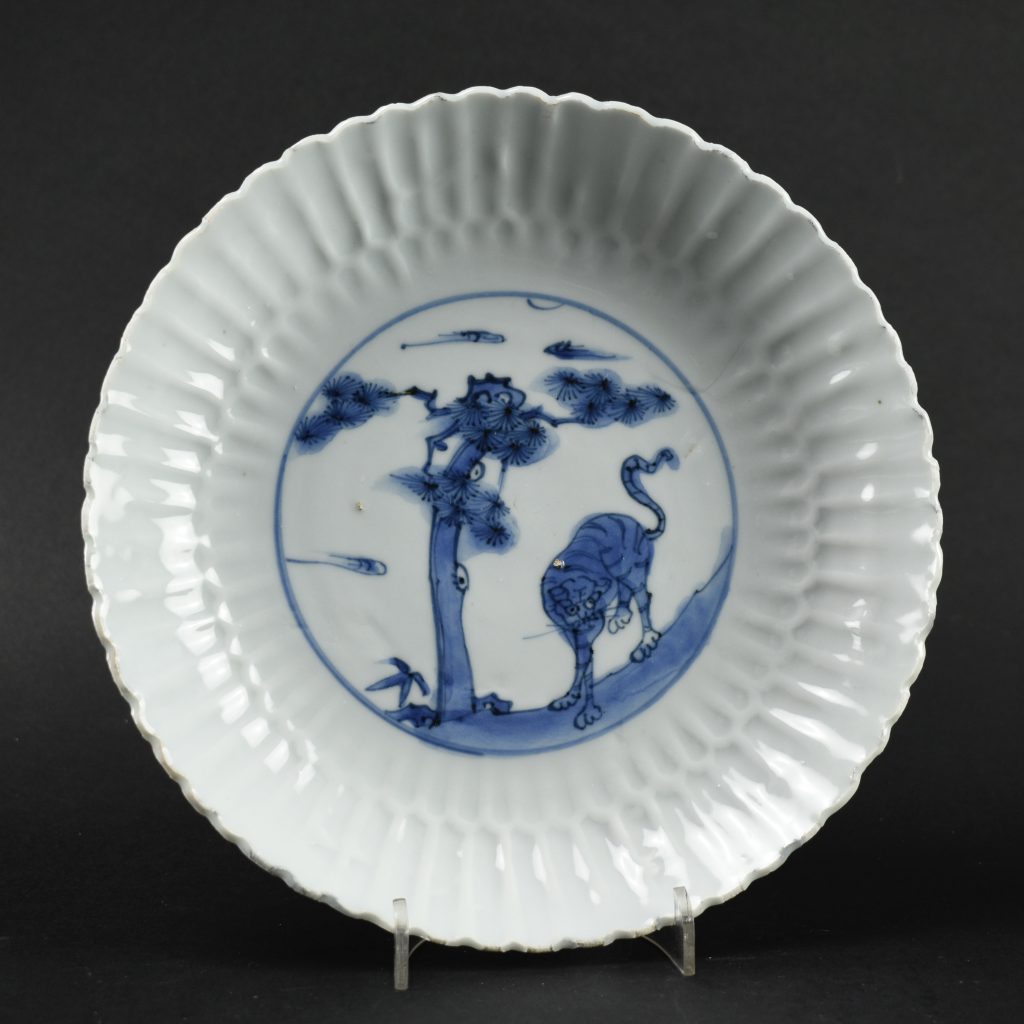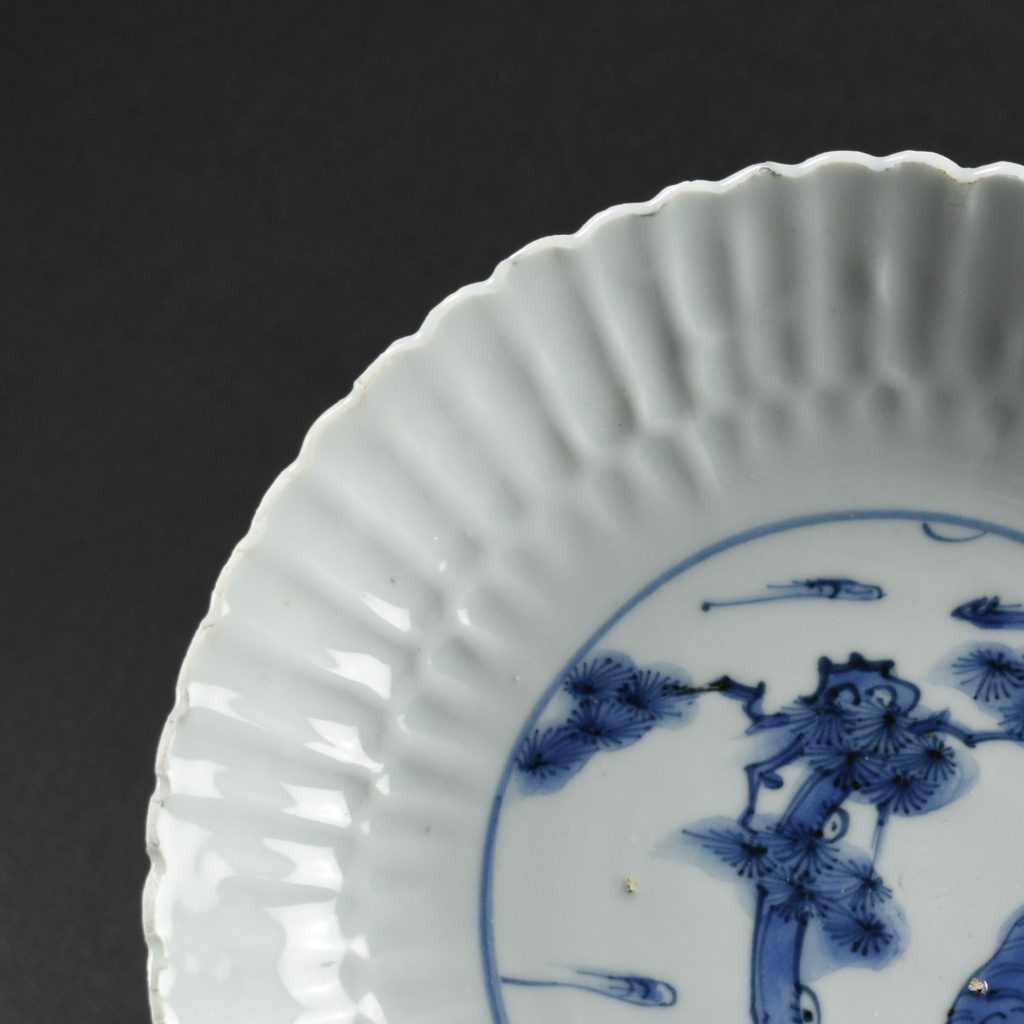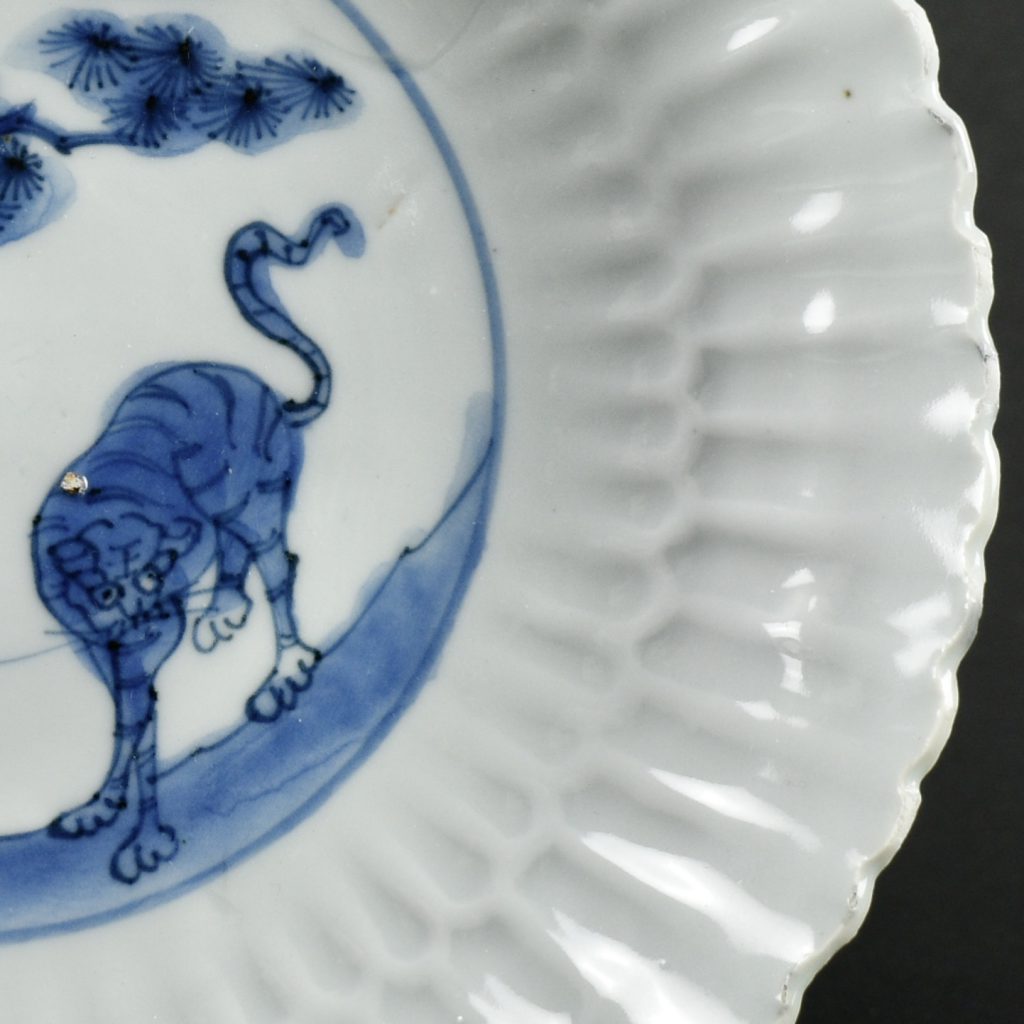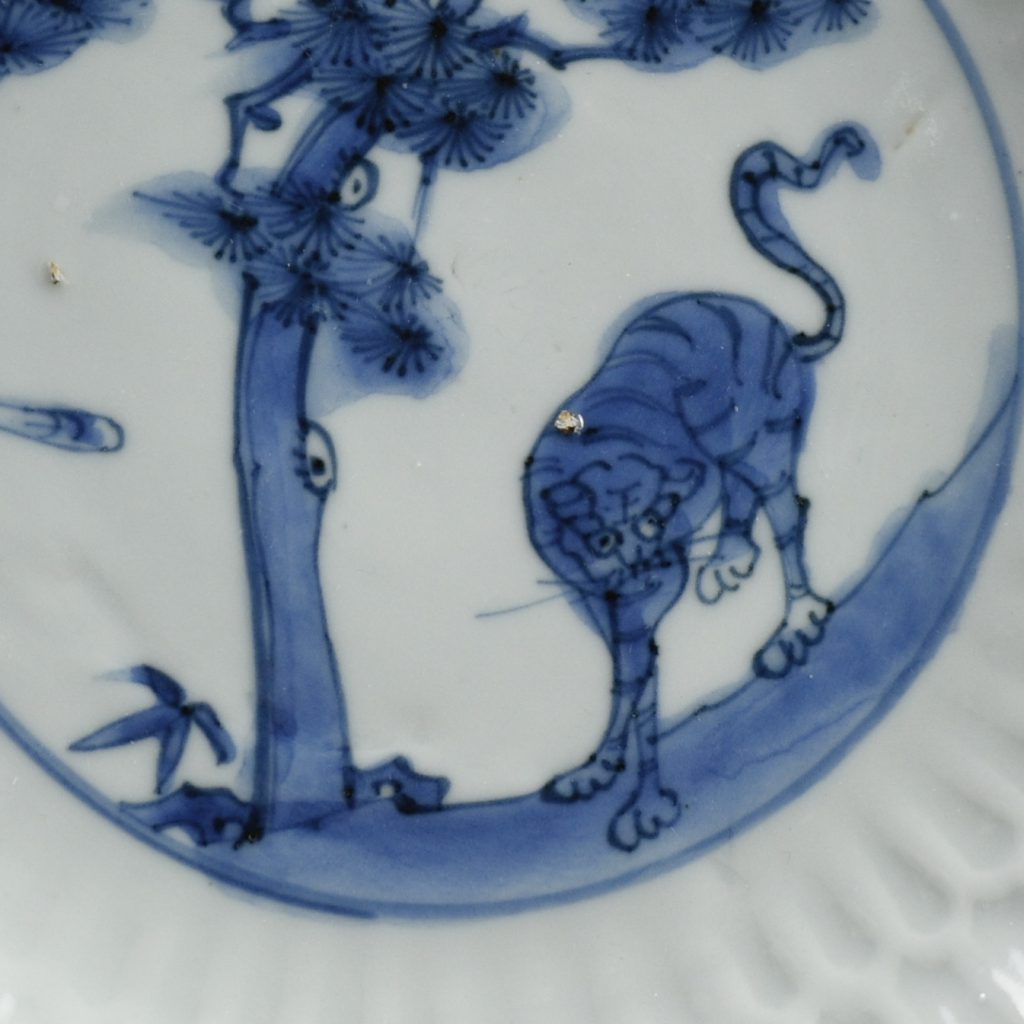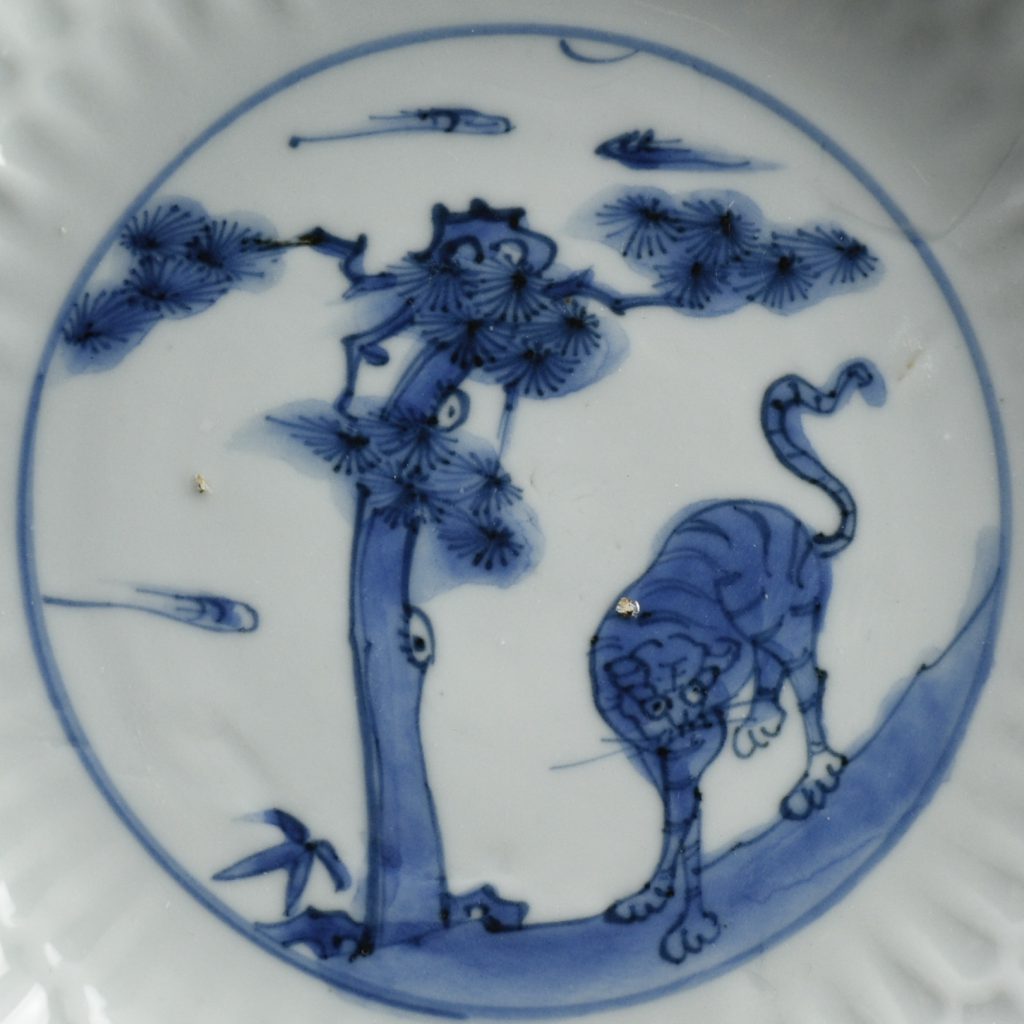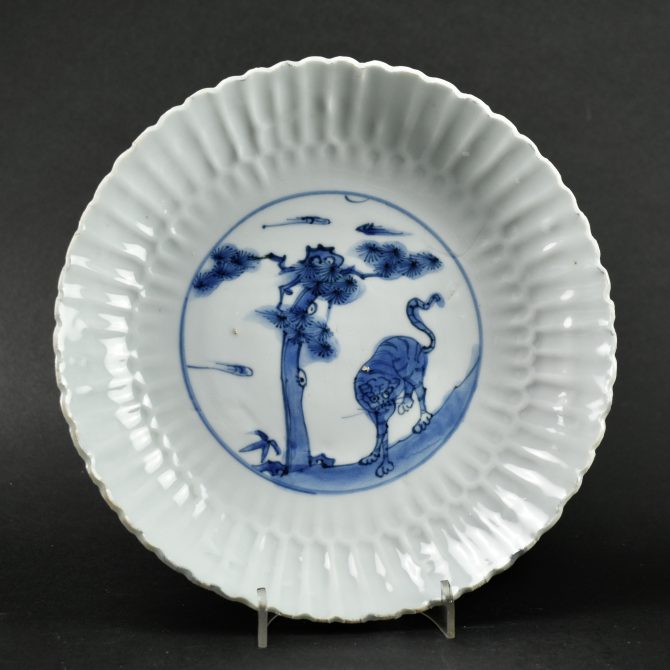
A Wanli Kraak Porcelain Dish with a Tiger
An Unusual Wanli Kraak Ware Saucer Shaped Porcelain Dish c.1590 – 1615. Perhaps made at Shibaqiao Kilns, part of Jingdezhen, Jiangxi (see references). The moulded double chrysanthemum petal rim gives this Kraak porcelain dish its distinctive look. The central design is painted with a rather curious looking tiger on an incline next to gnarled pine tree. The design of a tiger was popular for tea ceremony use in Japan when the guest of honour was military man; it suggests warlord with taste, with a powerful and aggressive character. Shards of a Kraak saucer-dish were excavated at Santa Fe La Vieja, Argentina. Archaeology, as well as extant pieces shows that this type of Kraak porcelain was popular in Portugal and Spain as well as their colonies in the New World. See, Jingdezhen to the World, The Lurie Collection of Chinese Export Porcelain from the Late Ming (Teresa Canepa, 2019. ISBN 978-1-912168-09-5) pages 130-131 plate 38.
For more information about Kraak Ware porcelain you can go to the History section of our website-menu, or click on the link: Kraak Ware Porcelain.
SOLD
- Condition
- In very good condition, the rim with typical friting. Firing fault, the body was scratched prior to firing, just to the right of the pine tree.
- Size
- Diameter 20.2 cm (8 inches)
- Provenance
- From a Private English Collection of Japanese and Chinese Porcelain from the 17th and 18th Century.
- Stock number
- 26144
- References
- The first archaeological evidence for this type of Kraak saucer-dish with double chrysanthemum petal rim are shards from the Portuguese nau Santo Alberto, sunk in 1593. A shard which is very similar to the present dish was excavated at the Shibaqiao Kilns part of Jingdezhen, Jiangxi. Shards of a Kraak saucer-dish with double chrysanthemum petal rim were also excavated at Santa Fe La Vieja, Argentina. For a dish of this type with two deer see : Jingdezhen to the World, The Lurie Collection of Chinese Export Porcelain from the Late Ming (Teresa Canepa, 2019. ISBN 978-1-912168-09-5) pages 130-131 plate 38.

